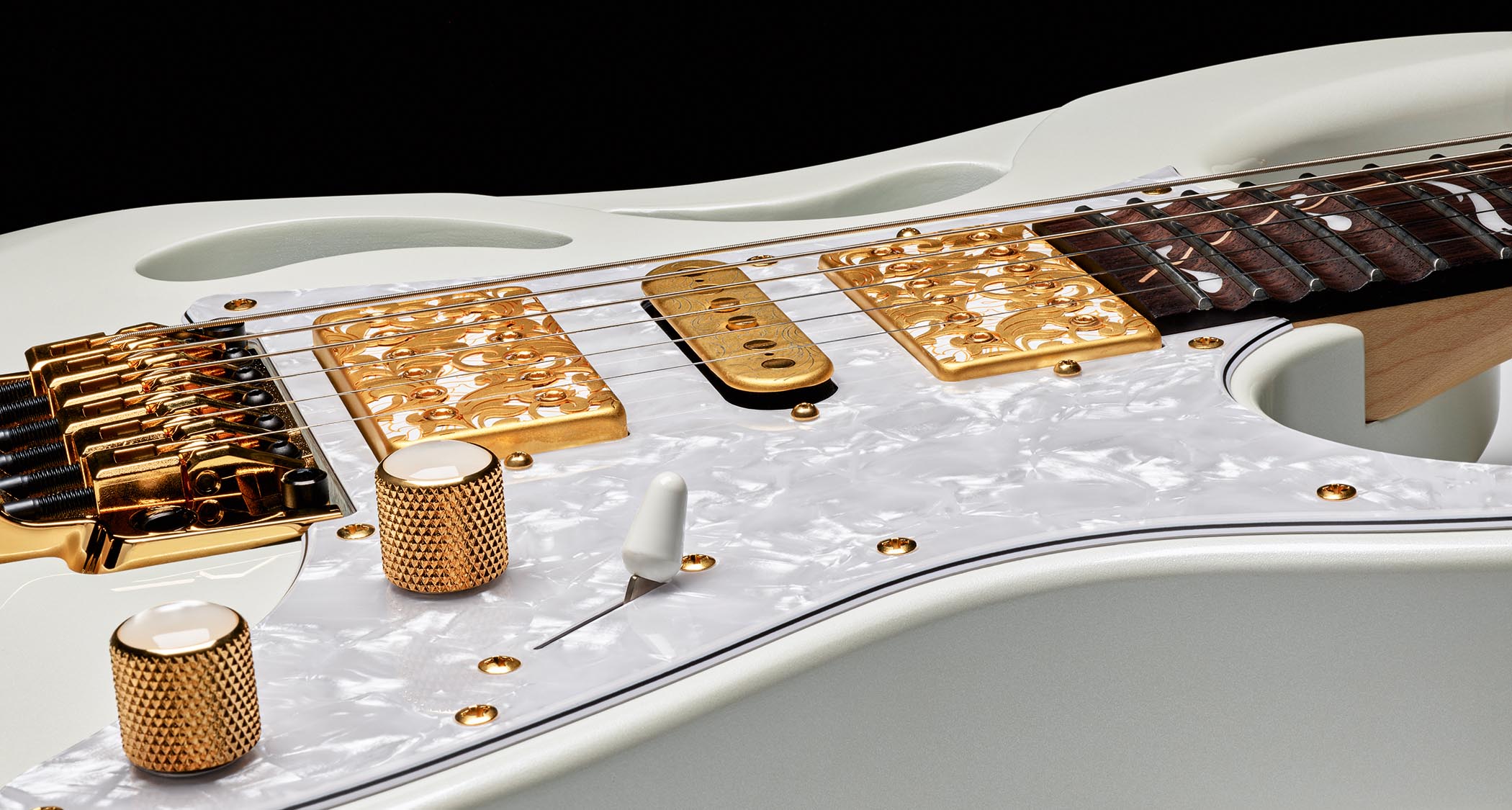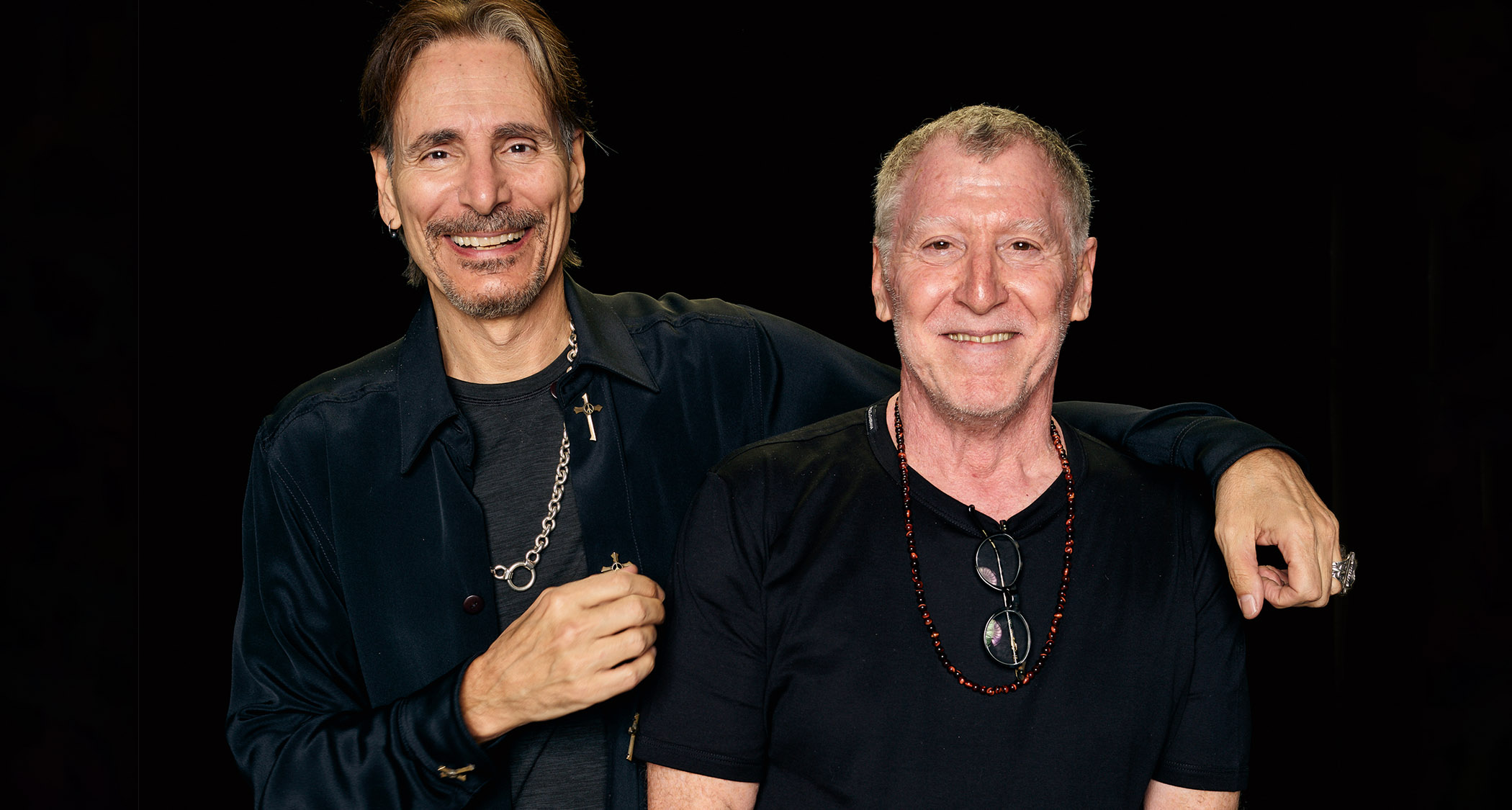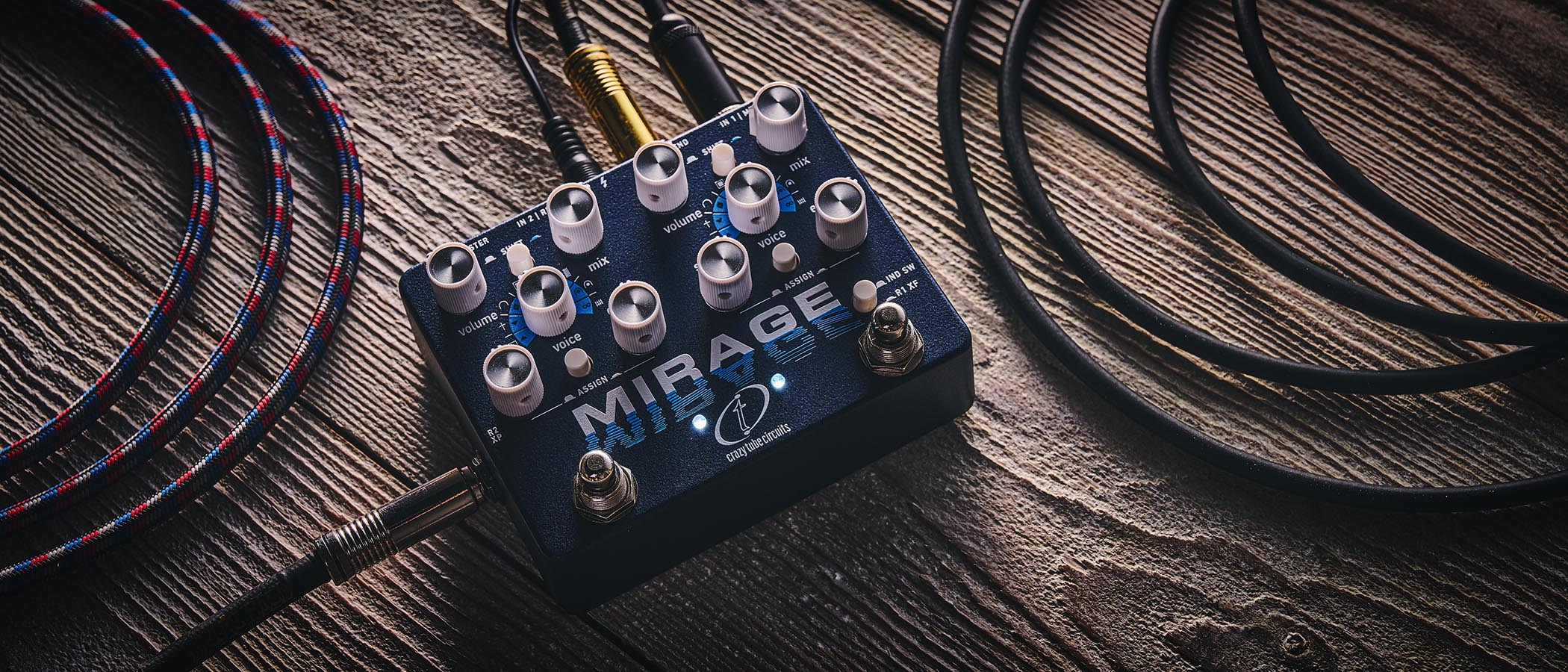“Gibson had lost the recipe, not only for guitar building but for pickup making based on their original designs. What I was after was making a rock ’n’ roll pickup”: How Larry DiMarzio changed the sound of rock guitar – and redesigned the Strat bridge
The master pickup maker tells us how his problem-solving mindset took him from repair shop to working with the biggest names in the biz and changing the face of rock guitar

As a young man in New York City, Larry DiMarzio was a guitar repairman with a big vision.
“What I was after was really making a better rock ’n’ roll pickup,” DiMarzio tells Guitarist. While that may sound simple in theory, it wasn’t in reality. From DiMarzio’s perspective – which was gleaned through years of repairing used guitars, which he found to be of increasingly poor quality – major brands that he grew up loving had lost the “process for building the pyramids”.
Essentially, by DiMarzio’s estimation, the halcyon years of the 1950s and early ’60s, which produced some of the most prized Les Pauls, Stratocasters and Telecasters ever produced, were a distant memory. In their place were quality control and tonal issues. The concerns with the build quality were one thing, and not necessarily DiMarzio’s priority. But the tonal needs were another matter entirely.
First came DiMarzio’s FS-1 pickup, which essentially replaced the stock Fender Strat bridge pickup. Early adopters were David Gilmour, which was fantastic, of course, but this was only the beginning.
Players such as Earl Slick, Gene Simmons, Paul Stanley, Ace Frehley, Al DiMeola and Joe Perry hipped themselves to DiMarzio, who, in addition to the FS-1, had developed the iconic Super Distortion humbucker, changing the face and sound of rock ’n’ roll in the 1970s.
Slick specifically was one of DiMarzio’s earliest supporters as DiMarzio modded his guitars. “If you listen to early Aerosmith records, you can tell between Joe and Brad Whitford’s stuff,” Slick says. “The sound was coming out of Joe’s pickups. They added punch. They weren’t just louder, they were sonically different, with more midrange.”
Larry DiMarzio chuckles when he looks back on the inherent differences between his product and what was available at the time, saying: “It’s the difference between supermarket-baked bread and a good bakery. That’s not what guitar players need. They need a good, honest product built from the ground up.”
All the latest guitar news, interviews, lessons, reviews, deals and more, direct to your inbox!
To that end, DiMarzio’s product reshaped hard-rock guitar in the 1970s and kept on doing so into the ’80s and ’90s. His pickups can be found in guitars of all shapes and sizes, making their way under the hands of everyone from Randy Rhoads and Paul Gilbert, to Kurt Cobain, Dimebag Darrell, Nita Strauss and Matteo Mancuso.
Now in his mid-70s, Larry DiMarzio no longer needs to work. And he certainly doesn’t need to invent any more iconic pickups – but that’s not stopping him. It’s not his style to sit back, and it’s definitely not his style to sell out, regardless of how many legacy brands are scooped up by major players around him.
Moreover, he’s certainly not about to start believing his own hype, no matter how many iconic players champion his creations. “I’ve never asked those questions directly,” he says. “My attitude was that I’m crew. I’m happy to do the job, you know? I’m the guy who walks in and fixes the problem.”
What led you to become a guitar repairman in New York City in the early ’70s?
“Maybe we should start with fantasy versus reality. I grew up having teachers who had interesting guitars. One of my earliest teachers – and I must have been 15 – had an original mid-’50s Strat with the V-shaped neck and stock Strat pickups.
“That guitar was very special; it was better than anything I could afford and was available to me. Having said that, some of the early guitars that I owned were broken or falling apart, so I wound up fixing those guitars.”
Once you got rolling, what were your observations of guitars in the ’60s and ’70s?
“In my mind, there were always the famous… it was really a matter of there was something different between the guitars that my teacher had, and the new guitars that were being produced through that period of time. Does that make sense?
“So the reason that I refer to ‘fantasy’ is that you have an idea in your mind, which may not be true and very often isn’t. Coming at it from the point of view that there were things that stood out because you didn’t own them, you had a fantasy about them.”

How did that fantasy merge with your reality?
“I started working at the Guitar Lab around ’71 or ’72. I was going to work at a professional guitar shop around the corner of 48th Street [in New York City] and I suddenly had access to tons of guitars that were coming through the shop for repair. Or I’d go down to Manny’s, pick up a Stratocaster and say, ‘This is like a dead tuna,’ you know?”
Pickups seemed to be the way to compensate for the shortcomings of new guitars
And pickups were the way you compensated for that?
“Yeah, pickups seemed to be the way to compensate for the shortcomings of new guitars. When I first started working on pickups, the first pickup that got built was a Strat pickup just because I had Strats at the time.”
That was the FS-1, right? What went into putting that together?
“I had this fabulous old Telecaster. It was very acoustic and it rang beautifully. But it wasn’t the sound that I was hearing on Eric Clapton records. Being in the city with a lot of professional players, you quickly learn that – like the pros did – you could figure out hardware that worked in certain ways.”

David Gilmour was an early adopter of the FS-1 pickups in his Strats. That must have been a big boost for you.
“I had no direct relationship with David; that was something that he just bought. But again, the idea was, how can I get this overdriven sound that I’m hearing from Clapton, Beck and Page, without destroying the environment in terms of small clubs and places that are serving drinks?”
How did the FS-1 do that as an alternative to Fender’s typically shrill bridge pickups?
“The first solution that I came up with was, of course, to increase the output of the Stratocaster pickup. But I also EQ’d it in a different way.
“If you’re playing in clubs, there are common problems, so what rapidly happened was – and as you said, which was spot on, I was a guitar repairman – people came in and wanted them, which eventually led to me opening my own shop.”

On the Super Distortion side of things, how important was it for you to have young players like Joe Perry, Ace Frehley and Paul Stanley equip their guitars with DiMarzio pickups as an alternative to using early fuzz pedals?
“Everybody is different. All your clients have requirements and needs, and sometimes you get friendly. A lot of what we did was in an effort to try to show people that there were obvious differences. Gibson had lost the recipe, not only for guitar building but for pickup making based on their original designs. What I was after was really making a rock ’n’ roll pickup.”
With such young stars as Earl Slick and Al Di Meola also using your pickups, was it apparent that you were making a dent in the market?
“I didn’t look at it like I was suddenly making an impact, you know? I try not to believe my own publicity [laughs]. During that period of time, we were trying to make everything better, right? But it became obvious to me that a lot of people liked what I was doing, and that was really nice.”
Is it true that Ace Frehley and the guys in KISS started using your pickups because you grew up with Gene Simmons?
“Ace found out about me because of Gene. I went to school with Gene and I went to college with Gene. And, oddly enough, I was invited to be the guitar player in Wicked Lester, the pre-KISS band. But I wanted to be in a Top 40 band, so I was like, ‘I gotta work,’ you know? I wanted to be working.”
In many ways, DiMarzio reshaped the sound of rock guitar in the ’70s, and that kept up in the ’80s, with players like Randy Rhoads and Paul Gilbert championing your pickups.
“As the guitar playing changed, you know, the pickups were very good and applicable for what was going on. It had a lot to do with the fact that everybody started building multiple gain stage amplifiers.”
How did Randy end up using DiMarzio pickups?
Fender decided to start casting Stratocaster bridges and I remember thinking, ‘Wow… that’s how you screw up a really good product’
“I was called up by Karl Sandoval [who built Randy Rhoads’s Polka Dot V], and I didn’t know Karl at the time. But Karl has always been a fan of the pickups; he liked the way they sound. He’s a guitar player and he recommended them. A lot of people were recommending the product because they liked it and used the product themselves.”
You also contributed to the evolution of shred guitars by redesigning the Strat bridge in the ’80s – how did you do that?
“Yes, around that time I redesigned the Fender bridge. Fender decided to start casting Stratocaster bridges and I remember thinking, ‘Wow… that’s how you screw up a really good product.’ So I redesigned the Stratocaster bridge, and guess what? The first thing I did was reduce the string spacing.
“I went from 2 ¼-inch to 2 ¹/8-inch. So I literally made the change that Eddie [Van Halen was known for and] was thinking about. He twisted the pickup to try to get the string balance right because, of course, the polepieces don’t line up properly with a 2 ¼-inch bridge.”

How is what DiMarzio did different, aside from not twisting the pickup?
“The solution is to change the outside string alignment, which also makes the strings go up the neck better. It’s more of a straight line from the bridge to the tuning pegs and, of course, through the nut. So the entire bridge works better.
“And we put tracks on the original DiMarzio bridges so that bridge saddles didn’t slide around, so when you use the tremolo, the guitar would come back into tune. Needless to say, Floyd Rose’s solution worked way better, but it also changed the sound of the guitar, which I didn’t like.”
In recent years, you worked with Steve Vai’s Ibanez PIA guitar, which features a beautifully engraved set of DiMarzio UtoPIA pickups.
We’re always making little improvements. I continue to introduce things that I think will make a better product
“Everyone can get their own thing – and way. I’m not locked into any particular thing. When we worked on the Steve Vai project, for example, the most recent PIA project, we knew that we could get the sound that Steve wanted, but I also wanted to do something very different cosmetically to the pickup.
“We wanted to integrate the cosmetics of the pickup to the overall look of the guitar, you know? And since I do a lot of photos, I can think of a way to begin that and add to the overall look of what we’re doing.”
In an age where there’s no shortage of replacement pickups on the market, what continues to set DiMarzio apart from the pack?
“We’re always making little improvements. I continue to introduce things that I think will make a better product. And again, the goal is to never skimp: the goal is to build something where the guitar players can rely on it.”
Have you gotten to the point where you can reflect on the legacy of DiMarzio?
You’re always dealing with skimping, penny-pinching and manipulation, and that destroys the integrity of the product.
“Good question. You have to be very careful with who owns a brand, and I would rather just continue doing what I’m doing. I don’t have to work, but I have a commitment to the company and my clients. The legacy of building high-quality guitars is an American art form.
“You’re always dealing with skimping, penny-pinching and manipulation, and that destroys the integrity of the product. People want to play a product that is designed with integrity and intent.”
Is steering away from those sorts of things what you’re most proud of?
“It’s tough. I would probably say [it’s] the fact that I haven’t sold out, you know? I’ve always just tried to stick with what I did well. I get up every morning and I just try to figure out what I’m doing today.”
- Find out more at DiMarzio
- This article first appeared in Guitarist. Subscribe and save.
Andrew Daly is an iced-coffee-addicted, oddball Telecaster-playing, alfredo pasta-loving journalist from Long Island, NY, who, in addition to being a contributing writer for Guitar World, scribes for Bass Player, Guitar Player, Guitarist, and MusicRadar. Andrew has interviewed favorites like Ace Frehley, Johnny Marr, Vito Bratta, Bruce Kulick, Joe Perry, Brad Whitford, Tom Morello, Rich Robinson, and Paul Stanley, while his all-time favorite (rhythm player), Keith Richards, continues to elude him.
You must confirm your public display name before commenting
Please logout and then login again, you will then be prompted to enter your display name.



